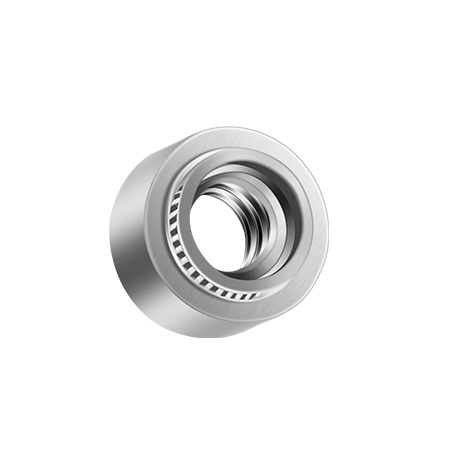In the realm of industrial fasteners, the Pem Clinch Nut, also commonly referred to as the PemSert® Clinch Nut, stands out as a versatile and reliable solution for securing components in thin sheets of metal or other materials. This innovative nut is designed to create a strong thread connection from a single side, eliminating the need for pre-tapped holes and offering a range of advantages over traditional methods. Let's delve into the workings of this remarkable fastener and understand how it achieves its remarkable performance.

The Essence of Pem Clinch Nut
At its core, the Pem Clinch Nut is a special type of nut that incorporates a unique clinching mechanism. This mechanism allows the nut to be pressed into a sheet material, forming a permanent and robust thread without damaging the material's integrity. The process is designed to be efficient, requiring minimal preparation and installation time, making it an ideal choice for high-volume production environments.
Installation Process
The installation of a Pem Clinch Nut begins by positioning the nut on the surface of the sheet material, typically using a precise fixture or jig to ensure accurate placement. Once in position, a specialized installation tool is applied to the nut's head, applying a controlled amount of pressure.
As the installation tool presses the nut into the sheet, the nut's flange engages with the material's surface, causing the surrounding material to flow and form a secure lock. This clinching action creates a strong thread in the sheet, which is ready to accept a mating screw or bolt.
The Clinching Mechanism in Detail
The clinching mechanism is the heart of the Pem Clinch Nut's performance. As the nut is pressed into the sheet, its flange spreads out, causing the material to deform plastically around the nut's circumference. This deformation creates a strong, positive lock between the nut and the sheet, ensuring that the nut remains securely in place even under high loads or vibrational forces.
Simultaneously, the nut's internal threads are formed, ready to engage with a mating screw. The threads are designed to be precise and robust, ensuring a secure and reliable connection.
Advantages of the Clinching Process
The clinching process offers several significant advantages over traditional fastening methods:
No Pre-Tapping Required: With the Pem Clinch Nut, there's no need to pre-tap holes in the sheet material, saving time and reducing the risk of damaging thin or delicate materials.
Increased Strength: The clinching process creates a strong, permanent lock between the nut and the sheet, resulting in a more robust and reliable connection.
Versatility: The Pem Clinch Nut can be used in a wide range of materials, including metals, plastics, and composites, making it a versatile solution for many applications.
Cost-Effectiveness: By eliminating the need for pre-tapping and reducing installation time, the Pem Clinch Nut helps to lower overall production costs.
The Pem Clinch Nut is a remarkable industrial fastener that leverages the power of the clinching process to create strong, reliable thread connections in thin sheets of material. Its unique design and efficient installation process make it an ideal choice for a wide range of industries, from automotive to aerospace and beyond. By understanding the mechanics behind this innovative nut, we can appreciate the many benefits it offers and harness its power to improve our own manufacturing processes.